Site Visit Recap | Low-Tech River Restoration in Birch Creek, Idaho
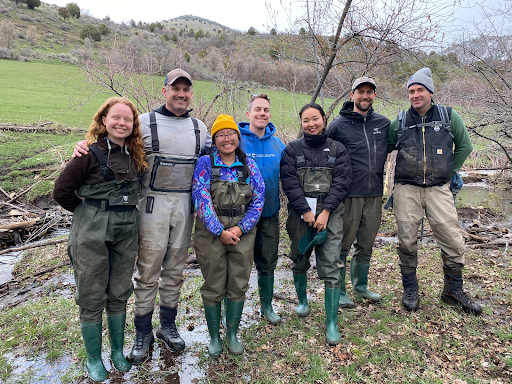

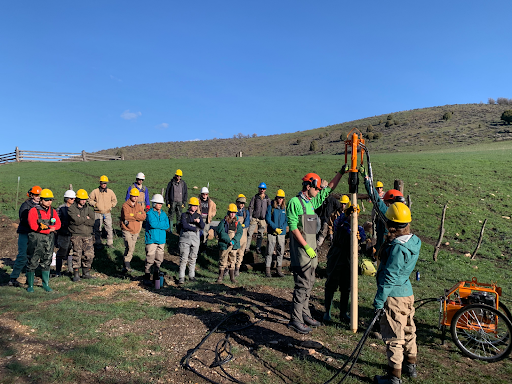
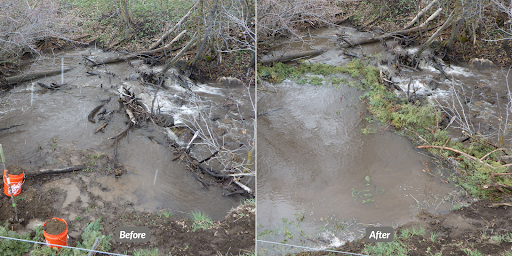
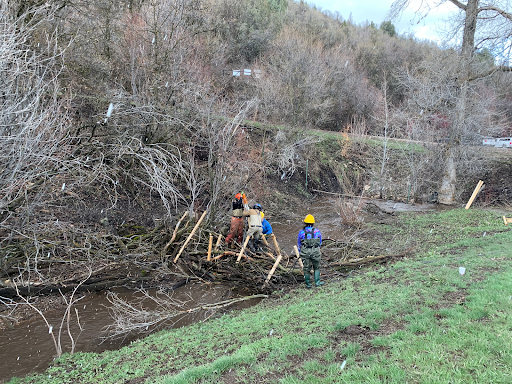
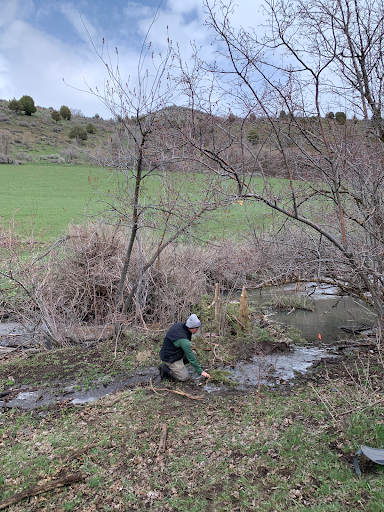
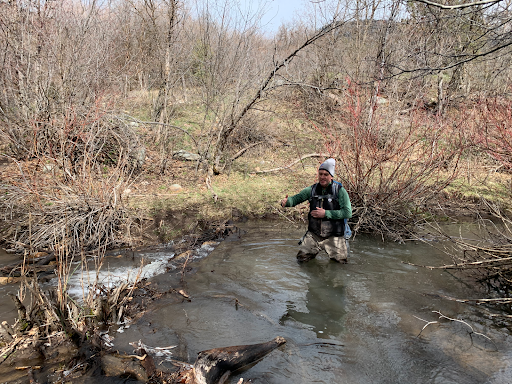
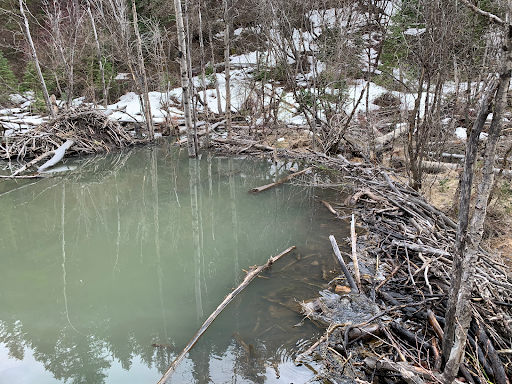
It was a fantastic opportunity for Blue Forest to take a hands-on approach to learn about low-tech restoration for increasing native habitat and water availability.
Written by: Clare Loughlin, Communications Associate
For years, Blue Forest Science Advisor Joe Wheaton has led low-tech river restoration projects in Birch Creek, Idaho. One Saturday in April, Blue Forest team members waded into the same creek to install wood structures that promote habitat complexity and freshwater storage. In collaboration with Anabranch Solutions and Utah State University, our team threaded branches, packed mud, pounded posts, and arranged juniper shrubs to complete more than 25 structures.
Decades of cattle grazing, beaver removal, and conifer encroachment have degraded Birch Creek, creating an incised channel, low water table, reduced floodplain connectivity, and seasonal flows. As a result, Birch Creek has less water storage capacity and critical habitat for native riparian and aquatic species, including greater sage-grouse and Bonneville cutthroat trout.
Process-based restoration is a low-tech, cost-effective method that mimics and stimulates healthy riparian processes. Based on the design of Utah State University students, we implemented these restoration techniques, including beaver dam analogs (BDAs) and post-assisted log structures (PALS) along Birch Creek. BDAs and PALS provide a comprehensive suite of freshwater benefits, such as slowing river flows, aiding in the formation of pools, widening the channel, restoring the floodplain, decreasing sediment runoff, filtering out pollutants, and encouraging the return of beavers. These benefits can be realized immediately and stimulate healthy, self-sustaining riparian processes in the long term.
The reaches modified during our site visit are part of the traditional lands of the Shoshone-Bannock people and present-day cattle rancher Jay Wilde. Since Jay began a restoration partnership with Joe Wheaton in 2015, Jay has seen tangible benefits to his riverscapes’ health. For example, Jay has measured drastic increases (10 – 50 fold) in Bonneville cutthroat trout and beaver populations (including 149+ beaver-made dams) and observed increasing summer flows despite record-low water years.
It was a fantastic opportunity for Blue Forest to take a hands-on approach to learn about low-tech restoration for increasing native habitat and water availability. Blue Forest is actively exploring ways to adapt the Forest Resilience Bond model to support ecological resilience interventions in riparian ecosystems.